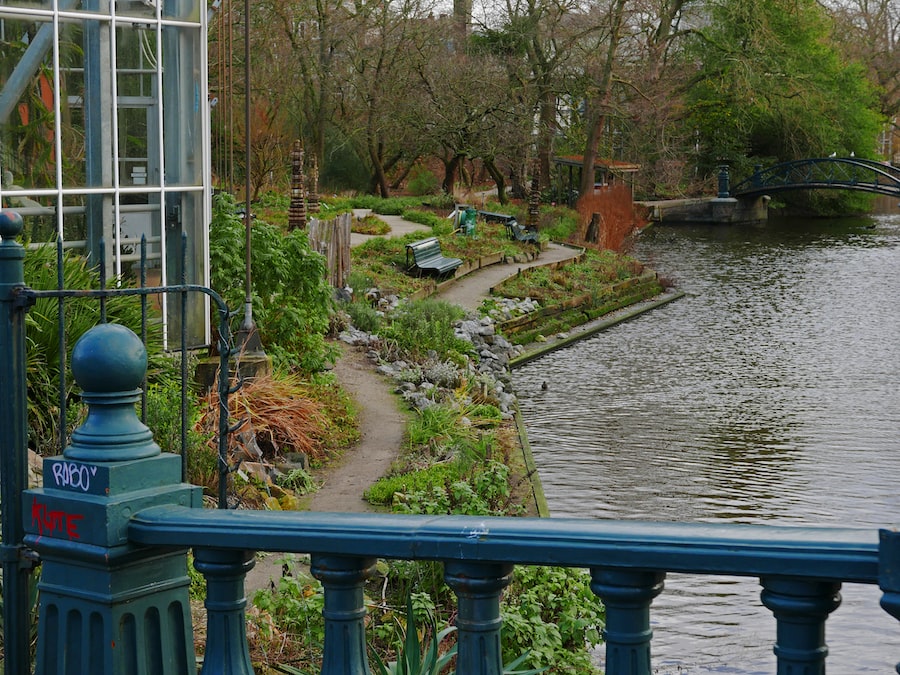Tomato Plants and Pollination: Understanding the Importance for a Bountiful Harvest

Pollination is a crucial process in the growth and yield of tomato plants. It is the transfer of pollen from the male reproductive organs to the female reproductive organs of a plant, which leads to fertilization and the production of fruits. Without pollination, tomato plants would not be able to reproduce and produce the delicious fruits that we enjoy.
Key Takeaways
- Tomato plants have a complex anatomy and growth cycle that includes vegetative and reproductive stages.
- Pollination is essential for tomato plant reproduction, and it can occur through self-pollination or cross-pollination.
- Bees and other pollinators play a crucial role in tomato plant pollination, but there are also common pollination problems that can be solved.
- Attracting pollinators to your tomato plants can be achieved through various methods, such as planting companion plants and providing nesting sites.
- Hand pollination can be a useful technique for ensuring successful tomato plant pollination, especially in challenging environmental conditions.
The Basics of Tomato Plants: Anatomy and Growth Cycle
Tomato plants have several different parts, each with its own function. The roots anchor the plant in the soil and absorb water and nutrients. The stem provides support for the plant and transports water, nutrients, and sugars between the roots and leaves. The leaves are responsible for photosynthesis, converting sunlight into energy for the plant. The flowers are where pollination takes place, and the fruits are the end result of successful pollination.
The growth cycle of a tomato plant can be divided into several stages. The first stage is germination, where the seed sprouts and develops into a seedling. The second stage is vegetative growth, where the plant grows leaves, stems, and roots. The third stage is flowering, where the plant produces flowers that are capable of being pollinated. The fourth stage is fruit development, where the flowers are fertilized and develop into tomatoes. Finally, there is the ripening stage, where the tomatoes change color and become ready for harvest.
The Role of Pollination in Tomato Plant Reproduction
Pollination is essential for tomato plant reproduction. It is the process by which pollen from the male reproductive organs (anthers) is transferred to the female reproductive organs (stigma) of a flower. This transfer of pollen allows for fertilization to occur, leading to the development of seeds and fruits.
There are two main types of pollination: self-pollination and cross-pollination. Self-pollination occurs when pollen from a flower is transferred to the stigma of the same flower or another flower on the same plant. Cross-pollination occurs when pollen from a flower is transferred to the stigma of a flower on a different plant.
Understanding the Different Types of Pollination: Self-Pollination vs. Cross-Pollination
| Type of Pollination | Definition | Advantages | Disadvantages |
|---|---|---|---|
| Self-Pollination | When pollen from the same plant fertilizes the ovules of the same plant. | Guaranteed pollination, no need for external agents, less energy expenditure. | Less genetic diversity, increased susceptibility to diseases and pests. |
| Cross-Pollination | When pollen from one plant fertilizes the ovules of another plant of the same species. | Increased genetic diversity, better adaptation to changing environments, increased resistance to diseases and pests. | Requires external agents (wind, insects, animals), higher energy expenditure, risk of pollination by incompatible plants. |
Self-pollination and cross-pollination have their own advantages and disadvantages. Self-pollination ensures that a plant can reproduce even if there are no other plants nearby. It is a reliable method of pollination, as the plant does not have to rely on external factors such as wind or insects to transfer pollen. However, self-pollination can lead to inbreeding and a decrease in genetic diversity.
Cross-pollination, on the other hand, allows for genetic diversity and can lead to stronger and more resilient plants. It requires the help of external factors such as wind or insects to transfer pollen between plants. However, cross-pollination can also lead to unwanted hybridization if different varieties of tomatoes are grown too close together.
The Importance of Bees and Other Pollinators in Tomato Plant Pollination
Bees and other pollinators play a crucial role in tomato plant pollination. They are attracted to the flowers by their bright colors and sweet nectar. As they move from flower to flower, they inadvertently transfer pollen from the anthers to the stigma, allowing for fertilization to occur.
Other pollinators such as butterflies, moths, and hummingbirds also contribute to tomato plant pollination. They are attracted to the flowers by their colors and scents, and they also transfer pollen as they feed on nectar.
To attract pollinators to your tomato plants, it is important to provide them with a suitable habitat. This can be done by planting flowers that attract pollinators nearby, providing a water source for them to drink from, and avoiding the use of pesticides that can harm them.
Common Pollination Problems and How to Solve Them

There are several common pollination problems that tomato plants may face. One problem is low pollination rates, which can result in poor fruit set. This can be caused by a lack of pollinators, unfavorable weather conditions, or improper cultural practices.
To solve this problem, you can try hand pollination. This involves manually transferring pollen from the anthers to the stigma using a small brush or cotton swab. Another solution is to attract more pollinators to your garden by planting flowers that they are attracted to and providing them with a suitable habitat.
Another common pollination problem is poor fruit development, where the fruits are misshapen or have empty cavities inside. This can be caused by incomplete pollination or poor fertilization. To solve this problem, you can try increasing the number of pollinators in your garden or hand pollinating the flowers.
Tips for Attracting Pollinators to Your Tomato Plants
To attract pollinators to your tomato plants, it is important to provide them with a suitable habitat. This can be done by planting flowers that attract pollinators nearby, such as marigolds, zinnias, and sunflowers. These flowers have bright colors and produce nectar that attracts bees and other pollinators.
You can also provide nesting sites for bees by leaving patches of bare soil or providing bee houses. Bees need a place to lay their eggs and raise their young, so providing nesting sites can help attract them to your garden.
Avoiding the use of pesticides is also important for attracting pollinators. Pesticides can harm bees and other beneficial insects, so it is best to use organic methods of pest control or only use pesticides when absolutely necessary.
The Benefits of Hand Pollination for Tomato Plants
Hand pollination can be beneficial for tomato plants, especially in certain situations. It allows for more control over the pollination process and can increase fruit set and yield. Hand pollination is particularly useful when there is a lack of pollinators or when the weather conditions are unfavorable for pollination.
To hand pollinate tomato plants, you can use a small brush or cotton swab to transfer pollen from the anthers to the stigma. Gently brush the anthers to collect pollen and then transfer it to the stigma of another flower. Repeat this process for each flower that you want to hand pollinate.
The Impact of Environmental Factors on Tomato Plant Pollination
Environmental factors such as temperature and humidity can have a significant impact on tomato plant pollination. Tomato plants require warm temperatures for optimal growth and pollination. If temperatures are too high or too low, it can affect the viability of pollen and reduce pollination rates.
Humidity is also important for tomato plant pollination. High humidity can cause pollen to become sticky and clump together, making it difficult for it to be transferred between flowers. Low humidity can cause pollen to dry out and become less viable.
To improve pollination rates, it is important to provide a suitable environment for tomato plants. This can be done by planting them in a location that receives full sun and has good air circulation. Providing shade during hot weather or using misters to increase humidity can also help improve pollination rates.
The Relationship Between Pollination and Tomato Plant Yield
Pollination directly impacts tomato plant yield. Without pollination, there would be no fertilization and no fruit development. A lack of pollination can result in poor fruit set, where the flowers do not develop into fruits or only a few fruits develop.
Proper pollination techniques can help maximize tomato plant yield. This includes attracting pollinators to your garden, providing a suitable habitat for them, and hand pollinating when necessary. By ensuring that your tomato plants are properly pollinated, you can increase the number of fruits that develop and improve overall yield.
Best Practices for Ensuring Successful Tomato Plant Pollination and a Bountiful Harvest
To ensure successful tomato plant pollination and a bountiful harvest, it is important to follow a few best practices. First, provide a suitable habitat for pollinators by planting flowers that attract them and providing nesting sites. Second, avoid the use of pesticides that can harm pollinators. Third, monitor environmental factors such as temperature and humidity and make adjustments as necessary. Finally, consider hand pollinating when there is a lack of pollinators or when weather conditions are unfavorable.
By following these best practices, you can ensure that your tomato plants are properly pollinated and produce a bountiful harvest of delicious tomatoes. Pollination is a crucial process in the growth and yield of tomato plants, so it is important to understand its importance and take steps to promote successful pollination.
If you’re wondering whether tomato plants need to be pollinated, you’ll find a comprehensive answer in this informative article from Lawn World. Understanding the importance of pollination for tomato plants is crucial for successful cultivation. To delve deeper into this topic, check out the article “Do Tomato Plants Need to Be Pollinated?” on Lawn World’s website. This resource will provide you with valuable insights and tips to ensure your tomato plants thrive. For more gardening-related articles, you can also explore Lawn World’s sitemap.



